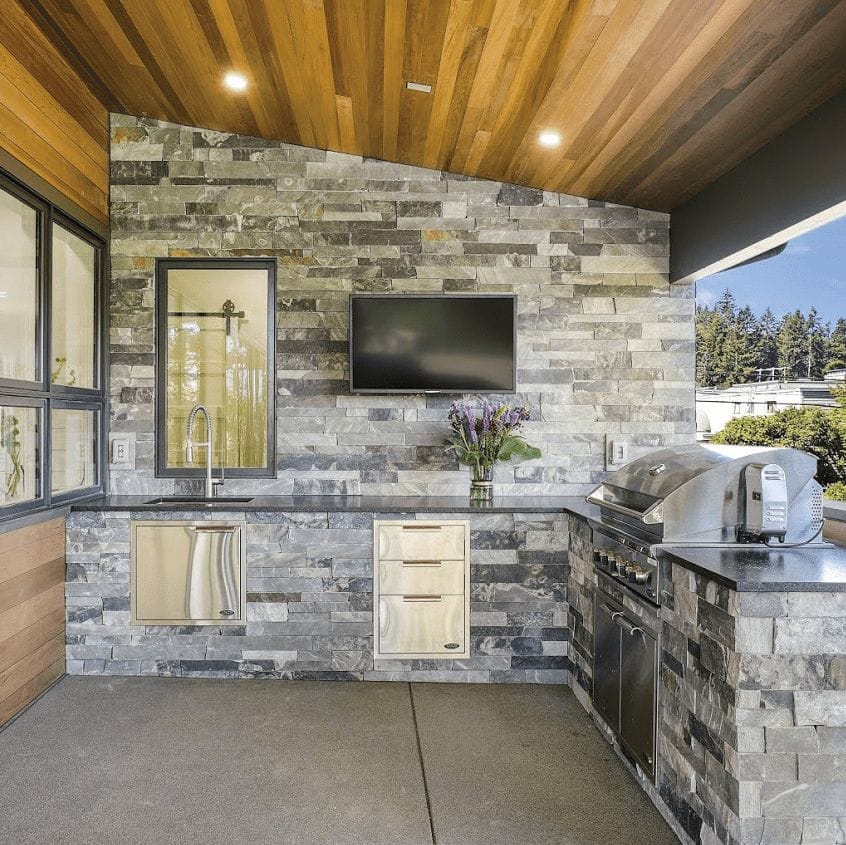Outdoor kitchens are gaining popularity. They are a great way to extend your living space and maximize your outdoor space. There are many details to consider, so take your time in the design and planning. Alinda Morris of Alinda Morris Interior Design, LLC offers her tips.
Function
Consider how you will use the space and how you want it to function. Encourage a relationship with the indoor space. All of the areas in your home should work together so it makes sense that the outdoor kitchen should be a natural extension of your interior and other outdoor entertaining spaces.
When designing any kitchen, start with the layout and appliances. There are lots of outdoor appliances to consider; if you want an easy outdoor cleanup option, think about investing in a sink and dishwasher. Utility drawers and mini refrigerators make storage and entertaining easy.
Do not limit yourself! Think about adding fun features (if you think you will use them) like a smoker or pizza oven. Make sure your appliances are rated for outdoor use — that means they can withstand freezing temperatures and extreme heat.
Materials
You will need to consider what materials are the best fit for your project. Is your outdoor kitchen covered or open to the elements? Here in the Pacific NW, we experience a variety of weather including world-record winter snows, the strongest non-tropical storms in the nation, and lots of rain, moisture and humidity. All of these factors will affect the integrity of materials used in your outdoor selections, especially your cabinetry, so consider this in detail.
Stainless steel is a good material to use for outdoor kitchen cabinets as it likely matches your grill and outdoor appliances, and it is weather- and bug-proof.
If you love the look of a painted cabinet, you can use a powder coated finish. The powder coating process provides a strong defense against corrosion. It is also a durable finish to protect cabinet doors and drawers from chips, spills, stains and unsightly fingerprints.
There are a few species of wood that can perform incredibly well in outdoor environments like teak, but any wood cabinet will require maintenance.
For a completely custom outdoor cabinet on a budget, you can use prefab stainless cabinets and set them in a natural or pre-cast architectural brick and stone veneer; stone is also highly weather-resistant.
Countertop materials such as concrete and natural stone are both durable and decorative. Concrete is porous and will capture stains and continue to patina over time. Granite works great outdoors, but marble may not. Most engineered stone is not recommended for outdoor applications. It is non-porous, but the process used to color and seal this engineered stone can fade and discolor significantly in direct sunlight.
Pulling it all Together
When selecting materials for your outdoor space and adding the finishing touches like furniture or a fire pit, you want to create balance with the interior and exterior color palette. You can add texture like stone, concrete, and more natural products but they should all work together to create the story you are trying to tell. This is the trick to creating a seamless yet stunning exterior space.
For Additional Information
@alindamorris on Instagram
DELANEY DVORAK
